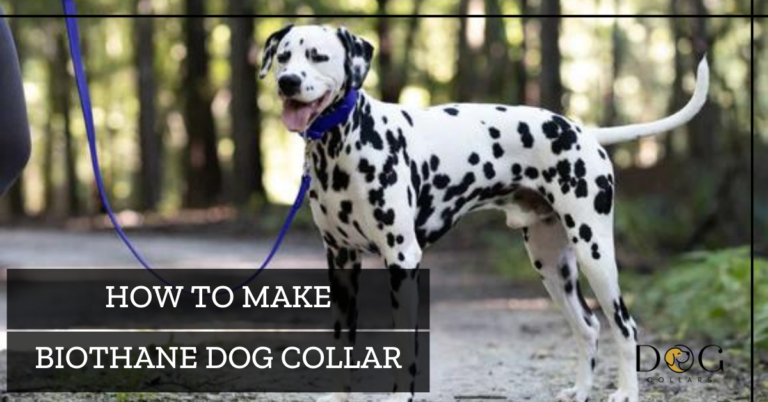Are Shock Collars Bad For German Shepherds – Pros Cons

Hey there, fellow dog lovers! If you’re the proud owner of a brilliant German Shepherd, Known for its intelligence, loyalty, and protective nature, these majestic dogs make excellent companions, you must have wondered about using shock collars for training.
The use of shock collars for German Shepherds is a controversial topic. While some argue they can be effective when used properly and responsibly, others believe they may cause discomfort or anxiety.
Well, hold on to your leashes because we’re about to dive into the electrifying world of shock collars and discover are shock collars bad for German shepherds! Are they truly the perfect solution or a shocking mistake?
Are Shock Collars Bad For German Shepherds
When it comes to training your German Shepherd, there are many methods and tools available. One tool that often sparks controversy is the shock collar. Many people wonder if using a shock collar is bad for German Shepherds and if there are better alternatives to consider.
Shock collars can have varying effects on German Shepherds, and opinions differ among experts and dog owners. While some people believe they can be effective when used correctly, others argue that they may cause discomfort or distress.
It’s essential to carefully consider the well-being of your furry friend and explore positive training alternatives before deciding on the use of shock collars. Prioritizing your German Shepherd’s comfort and happiness is the key to successful training and a strong connection with your loyal companion.
What Are Shock Collars And How Do They Work?
Shock collars, also called e-collar which are remote training collars, deliver electric stimulation to a dog’s neck for unwanted behaviors. They work through negative reinforcement, but there are concerns.
When it comes to training a German Shepherd with a shock collar, it’s vital to be cautious. Repeated shocks may have a negative impact on your furry friend’s social development and the trust-based connection you share.
Instead, positive reinforcement with treats and praise is more beneficial for effective and happy training sessions! Remember, trust and love are the best teachers for our intelligent and sensitive furry pals!
The Pros And Cons Of Using Shock Collars On German Shepherds
When it comes to dog training, there is a wide range of methods and tools available. One tool that has sparked controversy is the shock collar. Let’s explore the pros and cons of using shock collars on German Shepherds.
Pros:
- Quick Results: Shock collars can provide swift results in curbing undesirable behaviors, saving time in training.
- Remote Control: With a click of a button, you can correct behavior from afar, making it handy for off-leash training.
- Behavioral Correction: The jolt helps deter unwanted actions, keeping your German Shepherd safe and well-behaved.
Cons:
- Potential Discomfort: Shock collars may cause anxiety or distress, harming your dog’s well-being and trust in you.
- Negative Associations: Excessive use can lead to fear-based reactions and worse behavior problems.
- Impact on Bond: Relying solely on shocks may weaken the connection between you and your loyal companion.
Impact Of A Shock Collar On The Social Behavioral Development Of A German Shepherd
When it comes to the social behavioral development of German Shepherds, there is much debate surrounding the use of shock collars.
- One potential impact of using a shock collar on a German Shepherd’s social behavior is the breakdown of trust between the dog and its owner. Dogs are highly attuned to human emotions and reactions, and if they associate pain or discomfort with their owner due to the use of a shock collar, it may lead to fear or anxiety in their presence.
- Relying solely on aversive methods like shock collars for training can hinder a German Shepherd’s ability to develop appropriate social skills. Positive reinforcement techniques such as reward-based training are often more effective in encouraging desired behaviors without compromising the connection between dog and owner.
- Repeated exposure to shocks from these devices may cause increased aggression or reactivity in some dogs. This can manifest as fear-based aggression towards other animals or even humans. It is important to consider how this type of negative association might affect a German Shepherd’s interactions with both familiar individuals and strangers.
Positive Reinforcement Techniques For German Shepherds
When it comes to training your German Shepherd, positive reinforcement techniques can be highly effective. These methods focus on rewarding good behavior rather than punishing bad behavior.
- Timing is everything when rewarding your clever German Shepherd! As soon as they do something great, shower them with treats, praise, or playtime – instant connection!
- Stay consistent with those rewards! It strengthens good behaviors, making them stick around for more fun and furry success!
- Use clear cues like magic words (“sit,” “stay,” “come”) and gestures to guide your doggo’s training. Be patient and increase the challenge as they level up in skill!
- Every pup is unique, so find what makes your German Shepherd’s tail wag the most! Whether it’s treats, praise, or play, tailor rewards to their liking for the ultimate training success!
Positive reinforcement techniques not only enhance obedience but also strengthen the bond between you and your furry friend.
Common Mistakes Made When Using A Shock Collar
If you do decide to use a shock choker on your German Shepherd, it’s important to be aware of the common mistakes that many pet owners made.
- Punishment Over Training: Using the shock collar as punishment can create fear and mistrust, harming the training process.
- Over-Reliance: Relying solely on shock collars without positive reinforcement may hinder progress and weaken your bond.
- Improper Introduction: Not introducing the collar gradually can lead to discomfort and negative associations.
- Poor Fit: When the collar doesn’t fit right, it can zap the training! Not only can it give inconsistent shocks, but it might also leave collar marks on your furry friend.
- Instant Results Expectation: Expecting immediate miracles can set you up for disappointment; patience is key in training.
Remember, training is a journey of trust and understanding. Avoid these mistakes and let love guide your training for positive and rewarding results!
Conclusion
The use of shock collars on German Shepherds is a topic that sparks much debate among dog owners and trainers. While some argue that these collars can be an effective training tool when used correctly, others believe they can cause harm and damage to a dog’s well-being.Remember that every dog is unique in their temperament and learning style. What works for one may not work for another. It is always advisable to consult with professional trainers who have experience working with German Shepherds before deciding whether or not to use a shock choker.
The goal of training should be about strengthening the bond between you and your furry friend while promoting their overall well-being.






